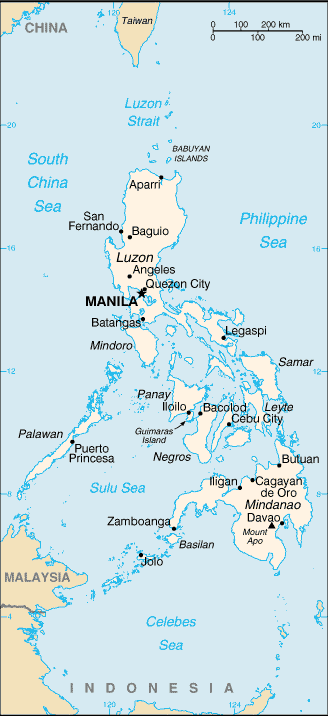Across Philippines -
Across Asia
Primary
Source: World Fact Book
|
| .......................................................................... |
.. |
...........................
...Across Asia......................................... .................
|
| ........ |
..............................Building Bridges ACROSS the Barriers.................................... .............................................................................. |
........ |
 Background: The
Philippine Islands became
a Spanish colony during the 16th century;
they were ceded to the US in 1898 following the Spanish-American War.
The islands attained their independence in 1946 after Japanese
occupation in World War II. The 21-year rule of Ferdinand MARCOS ended
in 1986, when a widespread popular rebellion forced him into exile.The
Philippines has had a series of electoral presidential transitions
since the removal of MARCOS. The government continues to struggle with
armed Muslim insurgencies in the south.
Background: The
Philippine Islands became
a Spanish colony during the 16th century;
they were ceded to the US in 1898 following the Spanish-American War.
The islands attained their independence in 1946 after Japanese
occupation in World War II. The 21-year rule of Ferdinand MARCOS ended
in 1986, when a widespread popular rebellion forced him into exile.The
Philippines has had a series of electoral presidential transitions
since the removal of MARCOS. The government continues to struggle with
armed Muslim insurgencies in the south.
